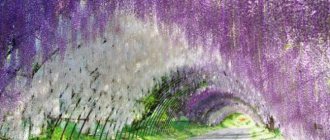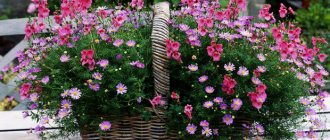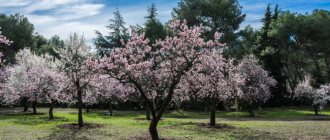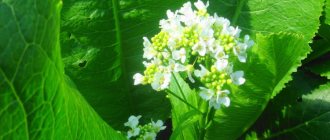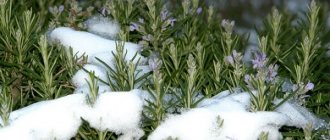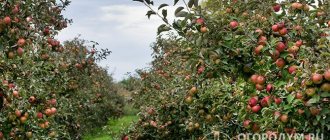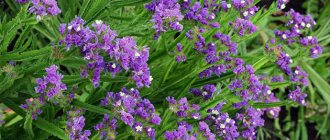Mahogany, greenery, soft and even negnyushka - behind all these popular names hides the evergreen coniferous tree yew, or Taxus baccata. Its homeland is the central and southern regions of Europe. Rarely found in natural ecosystems. The reason for this is human economic activity. The yew's durable wood, which has antibacterial properties, is highly prized, which is why it has been felled in large quantities over the centuries.
Botanical description
Botanical reference books describe yew berry as a coniferous tree or shrub. It grows so slowly that in 20 years it gains only 2 meters in height. But at the same time, the lifespan of this tree can be, according to various sources, up to 1.5 or even 4 thousand years.
- The height of the trunk reaches 27 meters, the diameter is up to 1.5 meters, it is covered with dormant buds that can give rise to lateral shoots.
- The crown is dense and lush, branched, cylindrical in shape, has many skeletal branches and often several peaks.
- The bark is lamellar or smooth, reddish-gray in color.
- The root system is strong enough for the tree to grow in any type of soil.
- The needles are 20–35 millimeters long, the needles are radial, shiny, dark green on top and paler below.
- Flowering begins at the end of April, fruit ripening in October. The fruits are seeds in a hard brown shell.
- The cones are solitary, with one straight ovule, brown.
It is important to know about the yew berry that almost all of its parts, including the roots, contain toxic substances and are deadly to humans.
Coniferous yews - types, planting, care and varieties with photos
Among the many cultivated conifers, the highly decorative and easy-to-care yew, a small tree or shrub known for its durability, occupies a worthy place.
Some of the oldest European specimens are over 1,500 years old! In ancient times, it was believed that trees brought death and even being in their shade was dangerous. According to Pliny, a tragic end threatened anyone who drank wine from a yew cup.
And such a warning is justified, since all parts of the tree, with the exception of the fleshy shells of the berries that hide the seeds, contain poisonous compounds.
The crop is lethal not only for people, but also for many domestic animals, for example, a lethal dose for a horse is just a few twigs, and for a person – a few seeds. Symptoms of poisoning: dry mouth, vomiting, dizziness, abdominal pain, shortness of breath, arrhythmia, hypotension and loss of consciousness. The plant is harmless to wild animals.
Popular varieties
There are more than 150 varieties of yew berry trees in the world. Many of them are grown in arboretums. Gardeners for suburban areas prefer the following varieties:
- Fastigiata (Fastigiata) - 3 - 5 meters high, the dense crown of which has the shape of columns. The shoots are branched, covered with dark small needles 2 - 2.5 centimeters long. Yew can be grown in both sunny and shaded areas. In addition, it tolerates pruning painlessly. Suitable for creating green sculptures. Over the course of a year it grows by 5–8 centimeters. By the age of 10, its height can reach 2 meters, but more often it is more squat, about a meter.
- The Elegantissima variety is a shrub variety of berry yew one meter high and a crown diameter of about 1.5 meters. In central Russia, due to winter frosts, it rarely grows above half a meter. Gardeners love this variety for the splendor of the tree and the special color of the needles - light yellow. The saturation and brightness of color depends on lighting conditions. The variety easily tolerates droughts; its developed root system is capable of extracting moisture from deep-lying soil horizons.
- Washingtonii (Washington) is another representative of berry yews with yellowish needles. Its needles are greenish-yellow in summer, and in autumn they change color and show all shades of bronze. The height of the trees reaches 2 meters. They prefer to grow in areas with moderate humidity.
- Repandens (Repandens) is a low-growing variety. Shrubs taller than half a meter in height are rare. Their crown is wide, almost spreading along the ground. The branches are long, drooping, widely spread. The needles are colored dark, bluish-green. This variety is suitable for decorating ponds, alpine slides, and mixborders.
Use in landscape design
The main advantage of the berry yew is the ability to easily and quickly, by cutting it, give it the shape of a ball or any other geometric figure, animal, column or pyramid. But even a plant not pruned by a gardener looks attractive due to its lush needles and bright red berries.
Designers advise planting yew berry as hedges along paths and using it to create alpine slides and topiaries. And to enliven your conifer plantings, you can decorate them with figurines, for example, garden gnomes, animals or birds.
Possible pests and diseases
Dry needles, stunted growth, yellowing foliage indicate the presence of disease or insects on the plants. The infection enters the bushes through non-sterile instruments, dirty water, and is carried by wind, rain, and birds.
Parasites
Coniferous trees can be attacked by sucking or pine-gnawing insects. They feed on plant juices, weaken the plant’s immunity, and in case of mass infection lead to the death of the yew.
Sucking parasites:
- The yew scale insect lives on needles and shoots. Insects are difficult to destroy, since many scale insects are hidden under the needles and are almost invisible. Pests are cleaned from coniferous leaves with a toothbrush or knife. In case of large-scale infection, the bush is sprayed with insecticides.
- Yew false scale up to 3 mm in size, yellow-brown in color. The larvae live under the bark on branches; adult scale insects overwinter in the litter around the bush. In the spring, track glue should be applied to the trunk to prevent the insect from climbing up the trunk. Insecticides are needed against larvae.
- Gallicia develops in the tissues of the bush. A weakened plant quickly dies. Red trees are treated with insecticidal preparations.
Sucking parasites include worms, aphids, bedbugs, spider mites, and leafhoppers. You can fight them with the help of folk and chemical drugs.
Needle-eating insects:
- The spruce needle beetle weaves a web around the foliage. Caterpillars make holes in the needles, and over time the needles fall off. The affected branches are treated with a solution of liquid soap. Dry needles need to be trimmed, collected and burned. In case of severe infection, systemic pesticides are used.
- The pine cutworm gnaws spring shoots and buds. This causes the foliage to dry out. Branches damaged by cutworms are colonized by stem parasites, which leads to bush disease. Food baits containing poison are used to combat the parasite. The plantings are also treated with biological products.
- Snails feed on the leaves of coniferous trees. To eradicate slugs, they are collected, the area is drained, and weeds are removed.
- Long-legged mosquito larvae feed on the roots of shrubs. To destroy the parasite, the soil is limed and diazinon preparations are added.
Diseases
Frosts, mechanical damage to branches, and high humidity lead to fungal infection of yew. Fungal diseases affect needles, bark, and shoots; they will spread to all coniferous plantings. Dense plantings accelerate the development of infection.
Main diseases:
- Fusarium;
- Necrosis;
- Fomoz;
- Brown Schutte.
To combat fungi, copper-containing substances are used, which are sprayed on shrubs. Treatment is also carried out for the purpose of prevention. Yew trees are treated with biological products that destroy fungal diseases.
Combination with other plants
Berry yew gets along most successfully with rhododendrons and conifers, for example, fir, dwarf pine varieties, thuja, and juniper. And the mixture of yew and fern creates the atmosphere of a real forest on the site.
Berry yew gets along best with rhododendrons and conifers.
When forming alpine slides, the conifer becomes part of a multi-level composition and is combined not only with its evergreen “brethren”, for example, with bush pines, cypresses, fir or juniper, but also with other plants. Next to the yew berry you can plant barberry, quince, heather, violets, lavender, lingonberries, mint, lilies and irises of various colors, edelweiss, and mosses.
Yew: everything about growing in the garden
Yew (lat. Taxus) is a garden ornamental crop of the Yew family. It can be a tree or a shrub, depending on whether it belongs to one of eight species. Several varieties of conifers, also called yews, are found in Europe and Asia, one in North Africa. The most frost-resistant ones grow in the Far East and Norway. Gradually, wild species of yew are disappearing, and cultivation by gardeners is increasing, since it requires minimal care and fits well into the landscape.
Preparing for landing
For gardeners, an important advantage of yew berry is its ease of care. However, before you purchase this plant for planting on your personal plot, you must take into account that its main enemies are: acidic soil, stagnant moisture, strong winds, droughts and, for some varieties, polluted air.
Selecting a location
Berry yews are considered the least demanding plants in terms of light among conifers. They develop more actively in the sun, but at the same time become less frost-resistant. Therefore, when choosing a place to plant yew, preference is given to shady areas where the trees retain the rich shades of their needles and bear fruit.
Yew berry develops more actively in the sun, but at the same time becomes less frost-resistant.
Another important point when planting is assessing the condition of the soil. Yew loves moist, nutritious soil and grows well in calcareous or clay soil. If there is a pond on the site, it is better to plant the plant nearby. The needles will receive enough moisture so as not to dry out and remain bright.
Ephedra copes well with drought. Its root system extracts moisture from aquifers located at great depths. In winter, if there is shelter and there is no strong wind, it tolerates temperatures down to -30 0 C.
Soil preparation
Before you start planting yew berries on your site, you need to take care of the quality of the soil. The tree requires loose, humus-rich soil. You can prepare it yourself. To do this, you need to mix peat, sand and turf soil in a ratio of 2:2:3.
The tree requires loose, humus-rich soil.
In addition, it is important to ensure that water does not stagnate near the root system of the conifer. Since the roots of yew penetrate the ground to great depths, it cannot be planted in places where groundwater lies close to the surface. Even if you raise the bed or arrange a drainage layer, the plant will not develop normally.
Conditions for growing yew, planting and care in open ground
For ease of care, when planting yew, you should choose a suitable location. It is advisable to immediately plant the yew tree where you will form it. Although it tolerates transplantation well, it reacts to this each time by slowing down its already weak growth rate. The older the tree, the less desirable it is to transplant.
When planting, the size of the hole for the plant should be commensurate with the dimensions of the future tree. For dwarf forms, a diameter and depth of 50 cm is enough, for large ones - a larger size.
When planting and caring for yew in open ground, keep in mind that different species differ somewhat in their soil preferences, but a medium-loamy, high-humus, neutral or slightly alkaline reaction can be considered a universal substrate. A substrate option can be a mixture of garden loam or turf soil and humus in a 3:1 ratio. At the same time add wood ash.
Video: Planting yew berry
You should carefully choose a location. The proximity of groundwater is unacceptable; protection from cold winds by buildings or terrain is desirable. In this sense, western and southern gentle slopes with the accumulation of large amounts of snow are good.
When growing and caring for yew, remember that the tree grows very slowly for the first six to seven years. Its growth accelerates significantly after 7-8 years, when annual growth can reach 15 cm or more in height and about the same in width.
Caring for plants involves maintaining soil moisture and fertility. During drought, water once every two weeks with crown irrigation. It is advisable to water in the evening, then the plants will be in a humid atmosphere that is beneficial to them until the morning. A good technique, as for other conifers, is to mulch the root zone.
One of the important conditions for growing yew is soil aeration. Yew loves breathable soils, so loosening should be regular. But you should not do this deeply, but only destroy the emerging crust.
In autumn, it is useful to cover the tree trunks of plants with fallen leaves of ornamental trees. A beneficial consequence of this technique, in addition to improving aeration and intensifying the activity of earthworms, is the improvement of wintering conditions. Covering bushes in central Russia is unnecessary, unless planting is too late.
Video: Yew in landscape design
A free-growing yew tree often has a sparse, uneven crown. Most decorative forms have dense crowns. Meanwhile, both are equally suitable for cutting. A squat, spread-out plant can be used to form a “pillow.” Conversely, a tree directed upward is more suitable for creating vertical figures. Don't get carried away by the complexity of the outlines. “Pillows”, balls, pyramids or spindle-shaped crowns look no less impressive. The main thing is that the cutting surface is impeccably smooth.
Yew has a high shoot-forming ability, so any shortening causes intense tillering. Avoid heavy pruning. And then you will see with satisfaction how the crown will become more and more dense.
Planting a seedling
A correctly selected yew berry seedling for planting is a plant with the characteristic color of the needles and trunk, the absence of stains, cracks and wounds on the bark and the absence of mold on the pot in which the tree is placed. Planting work is carried out in the spring months. The soil should be warm, but not filled with moisture.
Conifers should be planted 0.5 - 3 meters from each other. The distance between seedlings depends on the variety and the expected size of adult plants. If you plan to arrange a hedge of yew trees, then you can place the seedlings a little closer.
Having marked the distance between the green spaces on the site, you can prepare the planting hole. Standard depth is 60 – 80 centimeters. The hole is filled with fertile soil. You can add complex fertilizers for conifers.
The seedling is lowered into the hole so that the root collar is above the surface of the earth. After planting, the plant is watered and the soil is mulched with sawdust or peat.
Conifers should be planted 0.5 - 3 meters from each other.
Caring for yew in the garden
Caring for a perennial is not a difficult task, but for healthy growth it is still necessary to carry out preventive measures to protect the bush from pests and possible maximum and minimum temperatures.
Watering
Young bushes need to be watered monthly, but adults (over 3 years old) do not need additional moisture. Their spreading root system can extract food from the deep layers of the soil.
The soil
It is advisable to loosen and clear the tree trunk circle of weeds more often, especially for recently planted plants. The wet layer of soil around the tree should be loosened to a depth of 10-15 cm. You can sprinkle a 10 cm layer of sawdust or peat mulch. This will reduce the likelihood of yew contracting diseases.
Feeding
A year after applying the first fertilizers during the yew planting period, the hole must be fertilized again. Agrochemicals that contain the components required by the bush - potassium, nitrogen and phosphorus - are well suited for annual autumn feeding. For example, Nitroammofoski will need 70 g per 1 m2, and Kemira, which also contains selenium, 100 g per 1 m2.
Trimming
For several years after planting a bush or tree, pruning is not required. Only frostbitten, dry or diseased branches must be removed. When the yew stretches and blooms, to form a beautiful top, you should shorten them by no more than one-third of the entire length. Trees older than 7 years are unpretentious and will withstand even the shortest branch lengths, continuing their lush growth. Yew should be pruned in early spring, before the first buds awaken.
Transfer
Relocating a perennial to a place favorable and convenient for development is not difficult. This needs to be done in the spring. The technology is the same as when planting a bush. A hole is prepared 15-20 cm in size than the earthen ball with the bush, lined with a drainage layer of 20 cm and filled with nutritious soil mixture. The root collar remains on the surface and is sprinkled with mulch. Then you need abundant watering with mineral fertilizing.
Shortleaf
Wintering
Yew is frost-resistant and rarely suffers from hypothermia in winter, especially with heavy snow cover. If there is little snow in winter, you need to protect the crop from freezing. To do this, you need to arrange a frame around the trunk and cover it with a breathable material such as spandbond. You cannot use roofing felt or burlap, so as not to aggravate the damage from excess moisture in the spring. When the ground warms up enough, the covering material can be removed.
Since the aggressive rays of the sun in spring can harm the delicate needles and young shoots of yew, it is better to protect the tree from their influence.
Reproduction methods
Yew berry propagates in several ways: by seeds and cuttings. The first method is more complex and time-consuming.
Seeds
To propagate conifers using seeds, you need to be patient. The germination period can take several years. Sometimes seedlings appear only three years after planting, since seed germination persists for four years.
The difficulty in the practical application of this propagation method also lies in the fact that the seeds cannot be taken from any plant, since the yew berry is dioecious. The age when it begins to bear fruit is very respectable - 25 - 30 years.
Cuttings
Yew berries, especially decorative varieties, are much easier to propagate by cuttings. Both annual and biennial shoots can be rooted. If they are cut from branches that grow upward, the plants they produce are compact and elongated upward. Cuttings from branches directed horizontally produce low, spreading bushes.
Cuttings 15–20 centimeters long are cut in the first half of autumn, from the apical shoots. The needles are removed from the bottom. The cuttings are planted in seedling boxes and kept in a greenhouse in winter. The substrate for cuttings should be sand and peat, in a ratio of 1:2.
The rooting process lasts 3 months. At the beginning of spring, the material can be planted in pots, and in May - on ridges.
Properties and uses of yew
In the description of the yew berry, it should be noted that such trees are valued for their quality wood. It was used as a building material, so such trees were practically destroyed. The plant also has antibacterial properties.
Coniferous trees are widely used in folk medicine. So, based on it, you can prepare a product that will help protect the body during radiation and chemotherapy. To prepare a folk remedy, you need to pour 150 g of dry yew branches with vodka. The composition must be infused for 2 months in a dark room. The tincture should not be exposed to sunlight. This medicine should be taken according to a certain regimen and only after consultation with a specialist, since the drug is quite toxic.
Care
The condition and life expectancy of the plant depends on proper care. Young berry yews are more demanding in terms of lighting and watering conditions than mature trees. But taking care of them: watering, feeding, pruning, protecting from frost is necessary not only at the initial stage, after planting.
Watering
It is necessary to water the conifer regularly for two years after planting. During the rainy season, you can avoid watering altogether, but during the dry season, watering should be done once a month. One tree needs 10–12 liters of water.
The needles of berry yews need periodic cleaning from dust; it is recommended to irrigate them twice a month.
It is necessary to water the conifer regularly for two years after planting.
Top dressing
The plant is fed for the first time during planting. To do this, take a gram of nitroammophosphate and 15 milligrams of copper sulfate for each liter of substrate. The next feeding of similar composition is made a year later.
Gardeners also recommend fertilizing plants during the growing season, annually. For these purposes, drugs such as Kemira-universal or Florovit .
Trimming
Most varieties of yew berry, whether trees or shrub forms, require constant pruning. The shoots are cut to at least a third of their length.
You can begin to give the yew crown a certain shape already in the first years after planting. But this must be done with caution. It is better to start by removing damaged shoots or dry branches. Formative pruning is carried out in March - April.
Trees that have reached the age of 5 - 7 years can be thoroughly pruned. The choice of form depends on the characteristics of the variety and its appearance. Therefore, before initial pruning, it is important to familiarize yourself with the characteristics of a particular plant.
Trees that have reached the age of 5 - 7 years can be thoroughly pruned.
Wintering
Experience shows that only young conifers need to be covered for the winter. This can be done using peat, spreading it in a layer of 6 - 7 centimeters.
Another important measure when preparing yew berry for winter is protecting the branches from damage. In the cold they become more fragile and can break under the weight of snow or strong winds. To prevent this from happening, the branches are tied into a bundle using thin wire or twine. Adult plants do not require such care.
Diseases and pests
Yew berry is one of the most resilient plants. But since this natural quality is reduced in ornamental crops, they suffer from the following pests and diseases:
- Yew false shield - lives on needles and thin tree branches, its life activity is accompanied by blackening and shedding of needles. This is especially noticeable on the branches of the lower tier. To combat insects, insecticides are used, this is done twice - in early and mid-July with an interval of two weeks.
- The yew borer is a pest that forms white dots on the needles, which merge with the border along the edges of the needles. Affected trees and shrubs are treated in early spring and late May.
- Blackhead - caused by fungi Fumago, Capnodium, Apiosporium. Signs of the disease are a sooty black film that appears on shoots affected by the false scale insect. It not only worsens the appearance, but also interferes with photosynthesis. To help the plant, it is sprayed with fungicides.
In ancient times, the beautiful and dangerous yew berry was called the tree of life and death. Now these centenarians, the oldest of whom, according to legend, grew up during the time of Pontius Pilate, are listed in the Red Book. It’s not difficult to decorate your garden plot with one or more decorative varieties of the legendary tree. And yew looks very impressive in any neighborhood.
Description of the coniferous plant yew
Coniferous plant Yew in the photo
Yew is a very valuable coniferous species. This is the only tree that can withstand full shade. It is easier to cut than other conifers to form a crown.
There are 8 types of yew known in nature, photos and descriptions of which are presented on this page. They are all small evergreen coniferous trees and shrubs native to the temperate to tropical zones of the Northern Hemisphere. Two species of yew coniferous plants are found in Russia, one in the Caucasus, the other in the Far East. Both are most in demand as ornamental shrubs and have many dozens of original forms.
The length of the needles is usually 2-3 cm, the width reaches 0.3 cm. Yews are monoecious and dioecious plants belonging to the group of gymnosperms, like other conifers. But yew fruits are not at all like the cones of pine and spruce trees. They have the appearance of berries, the seed of which is almost completely hidden by the fleshy pericarp.
The following is a description of the various types of yew trees and their varieties.
